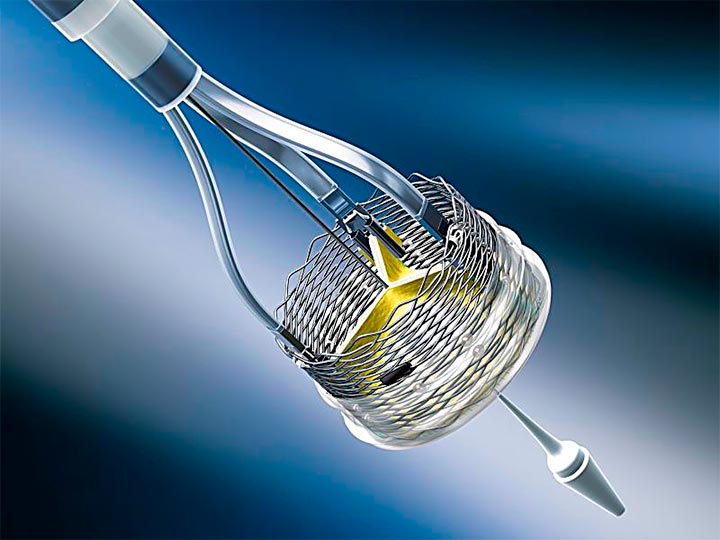Courtesy of Dr. Agustín Vecchia.
Paravalvular leak was once considered the greatest disadvantage of TAVR when compared to conventional surgery. Nowadays, new devices and more-experienced operators have managed to “control” this phenomenon, keeping related statistics within acceptable ranges. Repositionable-valve Lotus may probably offer the most effective solution for this event; however, it is associated with high rates of need for pacemaker when compared to other devices.
The aim of this work was to assess the incidence of pacemaker implantation and related factors while using a Lotus device (Boston Scientific, Natick, Massachusetts). This study retrospectively analyzed data from 228 patients between March 2013 and February 2015 in 10 sites in the United Kingdom. Among these patients, 27 (12%) had undergone prior pacemaker implantation and were thus excluded from the analysis.
Mean age was 81.2 ± 7.7 years; 50.7% of patients were male. More than a half of the cohort (55%) developed new left bundle branch block (LBBB) after the procedure.
Pacemakers were implanted in 32% of all patients, with a mean time to insertion of 3.0 ± 3.4 days. Main indications for pacing were atrioventricular (AV) block (n = 46, 72%) and LBBB with first degree AV block (n = 11, 17%).
Also read: “REPRISE III: Lotus and CoreValve Compared in High-Risk or Inoperable Patients.”
Pre-procedural electrocardiogram findings for patients who received a pacemaker included: no conduction disturbance (n = 41, 64%); first degree AV block (n = 10, 16%); right bundle branch block (n = 6, 9%), and LBBB (n = 5, 8%).
Pre-procedural conduction abnormalities were independently associated with an increase in the incidence of need for permanent pacemaker implantation (odds ratio [OR]: 2.54; p = 0.048). The absence of aortic valve calcification was also associated with an increase in the incidence of need for permanent pacemaker (OR: 0.55; p = 0.031).
Also read: “The Largest Series with LOTUS Valve Published So Far.”
A multivariate analysis did not show an independent association between implant depth, valve oversizing or balloon post-dilatation, and the need for permanent pacemaker implantation.
Editorial
Currently, there is no clear answer to the question of what would be an acceptable rate of incidence of permanent pacemaker implantation after TAVR. The rates in this series were clearly higher than in other studies (32% vs. 10.2% SAPIENS III or 10% Evolut Pro), and whether this was associated to device used, operator, or patient characteristics is still unknown.
As regards predictors, the high percentage of patients who required a pacemaker and did not present prior conduction abnormalities (unlike in other series) was surprising.
Finally, it is worth mentioning that the need for permanent pacemaker implantation should not be interpreted as something trivial, since it increases hospitalization length, hinders the improvement of ejection fraction, and, in a paper (Nazif et al. JACC Interventions 2015), it resulted in an increase in the mortality rate.
Courtesy of Dr. Agustín Vecchia.
Original title: Conduction Abnormalities and Permanent Pacemaker Implantation After Transcatheter Aortic Valve Replacement Using the Repositionable LOTUS Device. The United Kingdom Experience.
DOI: 10.1016/j.jcin.2017.03.044.
Subscribe to our weekly newsletter
Get the latest scientific articles on interventional cardiology
We are interested in your opinion. Please, leave your comments, thoughts, questions, etc., below. They will be most welcome.



